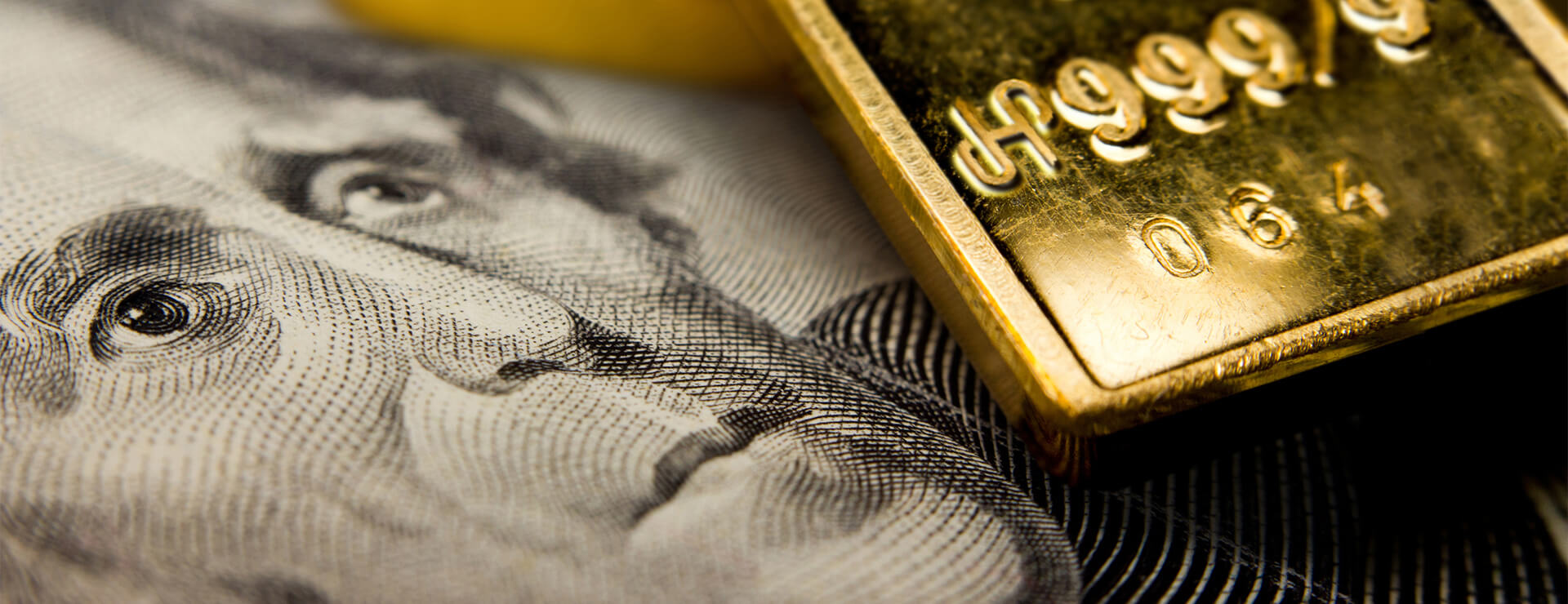
Why has gold risen so sharply?

James Beck, Partner and Head of Investments
In the past month the spot price of gold has risen from $1288 to $1402 an ounce – up 9%. There are a number of reasons for that.
Geopolitical uncertainty has increased – we have got the tensions with Iran and who knows what will happen between China and the US?
The other big factor is that interest rates are falling globally – markets are now predicting rate cuts in the US; Mario Draghi is talking about bringing down interest rates in Europe too and we may see cuts in the UK as part of the fallout of Brexit. It is a sign that the global economy is slowing. When people are nervous, gold is seen as a safe haven, so investors are turning towards it.
Why else might I want to hold gold?
In theory, the gold price rises in line with inflation. In Roman times an ounce would buy six metres of woollen cloth for a toga. Cloth was very expensive in those days. Today an ounce of gold is worth around £1,100 – about the cost of a Savile Row suit. This is probably a fair comparison with the toga. So it is seen as a good long-term store of value if inflation picks up, but at the moment that does not feel like a threat.
Are there downsides to buying gold?
Gold brings with it several challenges. First is price volatility. Gold’s purchasing power may have remained stable when viewed over centuries, but in the shorter term it can be volatile. In the past ten years alone, the gold price has been as high as $1900 an ounce and as low as $868. Though it should rise in line with inflation, it cannot be depended upon. Someone who bought gold at its peak in 1980, when it hit $666 an ounce, would have had to wait till 2007 for it to get back to that level on a nominal basis. In real terms, taking into account inflation, they would still be underwater today. Even when it hit its all-time nominal peak of $1900 in 2012 they would still have lost money in real terms. And think of the investment opportunities missed in the meantime.
Remember that gold does not offer any income – in fact you have costs for holding it. When interest rates are high, the opportunity cost of holding gold is significant. But when you have got upwards of $13 trillion of negative yielding bonds around the world, there are not many alternative places to put your money. That reduces the downsides. But it is still worth remembering that you are speculating on the price and the only thing driving it is demand. Supply is pretty stable. Demand has been rising lately, particularly from the Central Banks – Goldman Sachs expect them to buy 750 tonnes of gold this year compared with 650 tonnes in 2018. But if Trump settles his differences with China and Iran and the mood improves, you could find the gold price dropping sharply.
Given all the risks and costs, gold can only ever be a small part of the mix in a well-diversified portfolio.
What might I buy instead of gold?
We would typically hold around 3.5% of portfolios in gold as part of what we call “safe haven” assets. This is some insurance against the end of the cycle, the unexpected reappearance of inflation and spiralling geopolitical tensions. In that same pot we might also include government bonds. UK 10-year government bonds are currently yielding around 0.85%. You can get more buying US Treasury Inflation-Protected Securities (known as TIPS). These currently offer around 2.3% and give you some protection against inflation, but you are taking on currency risk. The dollar has weakened recently and that may continue. Gold tends to be inversely correlated with the dollar so it can be expected to rise if the dollar falls. That is why we like a basket of these safe haven alternatives.
How do I buy gold?
The simplest way is to buy an asset-backed Exchange Traded Commodity (ETC) fund. We use Gold Bullion Securities, which is backed by physical gold stored in HSBC vaults. It is designed to track the spot price, but it costs 0.4% p.a., which highlights the cost of holding an asset that does not generate income.
We say again, gold can only ever be a small part of the mix in a well-diversified portfolio. We are happy to use it at the moment, but we are unlikely to ever rely on it heavily and, we would argue, nor should investors generally.
Posted on 5 July 2019
Opinions and views expressed are personal and subject to change. No representation or warranty, express or implied, is made of given by or on behalf of the Firm or its partners or any other person as to the accuracy, completeness or fairness of the information or opinions contained in this document, and no responsibility or liability is accepted for any such information or opinions.
The value of an investment and the income from it can go down as well as up and investors may not get back the amount invested. This may be partly the result of exchange rate fluctuations in investments which have an exposure to foreign currencies. Fluctuations in interest rates may affect the value of your investment. The levels of taxations and tax reliefs depend on individual circumstances and may change. You should be aware that past performance is no guarantee of future performance.